The grocery delivery app market is experiencing unprecedented growth, with the industry expected to reach over $300 billion by 2025. Building a successful grocery delivery app requires strategic planning, robust features, and seamless user experience. This comprehensive guide covers everything you need to know about grocery delivery app development, from essential features to cost breakdowns and technical implementation.
Market Overview and Business Opportunity
Current Market Landscape
The online grocery delivery market has transformed dramatically, driven by changing consumer behaviors and technological advancement. As of 2025, there are three key trends on the online grocery delivery market: exponential growth, heavy competition, and a focus on instant delivery. A study showed that the online grocery store app market is expected to reach the amount of over $300 billion by 2025.
Key market statistics reveal enormous potential:
- Over 54% of US consumers regularly use grocery delivery services
- The market shows a consistent 20.5% annual growth rate
- Instant delivery has become a competitive differentiator
- Mobile commerce accounts for 70% of all grocery app transactions
Why Build a Grocery Delivery App Now?
Building an online grocery delivery app will enable your business to earn profits by taking customer orders and purchasing those items at lower costs from local stores and sellers. The business model offers multiple revenue streams including delivery fees, commission from partner stores, subscription services, and advertising revenue.
The competitive landscape features established players like Instacart, Amazon Fresh, and Walmart Grocery, but there’s still significant opportunity for niche markets, local grocery stores, and innovative service models.
Types of Grocery Delivery Apps
Single Store Apps
Perfect for individual grocery chains or local stores wanting to offer delivery services. These apps focus on one retailer’s inventory and provide branded shopping experiences.
Best for: Established grocery chains, specialty food stores, organic markets
Aggregator Apps
Multi-vendor platforms that partner with various grocery stores, allowing customers to shop from multiple retailers through one app.
Best for: Entrepreneurs entering the market, areas with diverse grocery options
On-Demand Delivery Apps
Apps that offer ultra-fast delivery, typically within 10-30 minutes, focusing on essential items and convenience products.
Best for: Urban markets, convenience-focused consumers
Marketplace Apps
Comprehensive platforms that include groceries alongside other products, creating one-stop shopping destinations.
Best for: Large-scale operations, diversified e-commerce businesses
Essential Features for Grocery Delivery App Success
Customer App Features
Core Shopping Features
- Advanced Product Search and Filtering: Implement AI-powered search with filters for dietary preferences, brands, price ranges, and nutritional information
- Smart Shopping Lists: Allow users to create recurring lists, share lists with family members, and get suggestions based on purchase history
- Barcode Scanner: Enable users to scan products for quick reordering and nutritional information
- Product Recommendations: Use machine learning to suggest items based on browsing history and seasonal trends
User Experience Features
- Personalized Dashboard: Customize homepage based on user preferences and shopping patterns
- Real-Time Inventory: Display accurate stock levels and suggest alternatives for out-of-stock items
- Multiple Payment Options: Incorporate a variety of payment options in your app for grocery shopping. Options such as cash-on-delivery debit and credit accounts, digital wallets, and net banking will help your customers feel secure and make payment easy and fast
- Order Tracking: Provide real-time delivery tracking with estimated arrival times
- Push Notifications: Send personalized offers, order updates, and delivery notifications
Delivery Driver App Features
Essential Driver Tools
- Route Optimization: GPS-integrated mapping for efficient delivery routes
- Order Management: Clear order details, special instructions, and customer contact information
- Earnings Dashboard: Real-time tracking of earnings, tips, and performance metrics
- Offline Mode: Allow basic functionality when internet connectivity is limited
Admin Panel Features
Business Management Tools
- Comprehensive Analytics: Track sales, customer behavior, popular products, and delivery performance
- Inventory Management: Real-time stock updates, low inventory alerts, and supplier management
- Order Processing: Efficient order queue management and fulfillment tracking
- Customer Support: Integrated help desk and dispute resolution tools
- Revenue Management: Commission tracking, payout processing, and financial reporting
Technical Architecture and Development {#technical-development}
Technology Stack Recommendations
Frontend Development
- Native iOS: Swift 5.0+ for optimal performance and iOS-specific features
- Native Android: Kotlin for modern Android development
- Cross-Platform Alternative: React Native or Flutter for cost-effective multi-platform development
Backend Development
- Server-Side: Node.js with Express or Python with Django/Flask
- Database: PostgreSQL for complex queries, Redis for caching
- Cloud Infrastructure: AWS, Google Cloud, or Microsoft Azure
- API Architecture: RESTful APIs with GraphQL for complex data relationships
Real-Time Features
- WebSocket Integration: For live order tracking and instant notifications
- Push Notification Services: Firebase Cloud Messaging (FCM) or Apple Push Notification Service (APNs)
- Real-Time Analytics: Integration with tools like Google Analytics and custom dashboards
Development Process
Phase 1: Planning and Design (4-6 weeks)
- Market research and competitor analysis
- User persona development and journey mapping
- Wireframing and prototype creation
- Technical architecture planning
Phase 2: MVP Development (12-16 weeks)
- Core feature implementation
- Basic user interfaces for all app components
- Payment gateway integration
- Basic admin panel functionality
Phase 3: Advanced Features (8-12 weeks)
- AI-powered recommendations
- Advanced analytics implementation
- Third-party integrations
- Performance optimization
Phase 4: Testing and Launch (4-6 weeks)
- Comprehensive testing across devices and platforms
- Beta testing with real users
- App store submission and approval
- Marketing campaign launch
Third-Party Integrations
Payment Processing Integrations
Essential Payment Gateways
- Stripe: Comprehensive payment processing with global support
- PayPal: Trusted payment option with buyer protection
- Square: Point-of-sale integration for in-store pickup options
- Apple Pay/Google Pay: Mobile wallet integration for seamless checkout
Regional Payment Options
- Local Bank Integrations: Partner with popular local banks for direct transfers
- Cash on Delivery: Essential for markets where digital payments aren’t fully adopted
- Buy Now, Pay Later: Integration with services like Klarna or Afterpay
Logistics and Delivery Integrations
Mapping and Navigation
- Google Maps API: Comprehensive mapping with real-time traffic updates
- Mapbox: Customizable mapping solutions with offline capabilities
- Here Maps: Alternative mapping service with strong logistics features
Delivery Management
- Route Optimization APIs: Tools like Route4Me or OptimizeToure for efficient delivery planning
- Delivery Tracking: Integration with services like Shippo or EasyPost
- Third-Party Delivery Services: Partner with DoorDash, Uber Direct, or local delivery companies
Communication and Support
Customer Communication
- Twilio: SMS and voice communication for order updates
- SendGrid: Email marketing and transactional emails
- Intercom: In-app chat and customer support
- Zendesk: Comprehensive customer service platform
Marketing and Analytics
- Google Analytics: Website and app usage tracking
- Facebook Pixel: Social media advertising optimization
- Mixpanel: Advanced user behavior analytics
- Mailchimp: Email marketing automation
Inventory and POS Integration
Retail Management Systems
- Shopify: E-commerce platform integration
- WooCommerce: WordPress-based store integration
- Magento: Enterprise-level e-commerce integration
- Custom POS Systems: API integrations with existing store systems
Comparison of Development Options
In-House Development Team
Pros:
- Complete control over development process
- Direct communication and collaboration
- Long-term team building and knowledge retention
- Easier implementation of changes and updates
Cons:
- Higher initial investment in hiring and infrastructure
- Longer time to assemble qualified team
- Ongoing salary and benefit costs
- Need for project management expertise
Best for: Large companies with long-term app development plans and sufficient budget
Outsourcing to Development Agency
Pros:
- Access to experienced development teams
- Faster project initiation and completion
- Fixed project costs and timelines
- Access to latest technologies and best practices
Cons:
- Less direct control over development process
- Potential communication challenges
- Dependency on external team for updates
- Varying quality standards between agencies
Best for: Businesses wanting professional development without internal team building
Freelance Developers
Pros:
- Most cost-effective option
- Flexibility in team composition
- Access to specialized skills
- Direct communication with developers
Cons:
- Higher project management burden
- Quality and reliability risks
- Coordination challenges with multiple freelancers
- Limited ongoing support
Best for: Startups with limited budgets and strong technical leadership
No-Code/Low-Code Platforms
Pros:
- Rapid development and deployment
- Lower technical expertise required
- Cost-effective for simple applications
- Quick prototyping and testing
Cons:
- Limited customization options
- Scalability constraints
- Vendor lock-in risks
- Monthly subscription costs
Best for: Small businesses testing market demand or creating simple delivery apps
Settings and Configuration
User Settings and Preferences
Account Management
- Profile Information: Personal details, contact information, dietary preferences
- Address Management: Multiple delivery addresses with labels (home, work, etc.)
- Payment Methods: Saved cards, digital wallets, default payment selection
- Notification Preferences: Order updates, promotional offers, delivery notifications
Shopping Preferences
- Store Selection: Preferred grocery stores and automatic store switching
- Product Preferences: Organic options, brand preferences, dietary restrictions
- Delivery Preferences: Time slots, special instructions, contactless delivery
- List Management: Shopping list templates, sharing permissions, auto-replenishment
Admin Configuration Options
Business Settings
- Store Management: Add/remove partner stores, commission rates, operational hours
- Delivery Zones: Geographic coverage areas, delivery fees, time slots
- Pricing Configuration: Dynamic pricing rules, surge pricing, discount management
- Tax Settings: Regional tax rates, tax-exempt categories, compliance settings
Operational Settings
- Order Management: Order processing workflows, automatic confirmations, cancellation policies
- Inventory Sync: Real-time stock updates, low inventory thresholds, out-of-stock handling
- Driver Management: Onboarding processes, performance metrics, payout schedules
- Customer Service: Support ticket routing, response templates, escalation procedures
Technical Configuration
Performance Settings
- Caching Configuration: Redis setup for faster app performance
- CDN Integration: Content delivery network for image and static file optimization
- Database Optimization: Query optimization and indexing strategies
- API Rate Limiting: Protection against excessive API calls
Security Configuration
- Authentication Settings: Multi-factor authentication, session management
- Data Encryption: End-to-end encryption for sensitive data
- Privacy Controls: GDPR compliance, data retention policies
- Fraud Prevention: Transaction monitoring, suspicious activity detection
Support and Maintenance
Customer Support Framework
Multi-Channel Support
- In-App Chat: Real-time support with automated responses for common queries
- Email Support: Detailed issue resolution with ticket tracking
- Phone Support: Voice support for urgent issues and complex problems
- FAQ Section: Comprehensive self-service knowledge base
Support Categories
- Order Issues: Order modifications, cancellations, refunds, missing items
- Delivery Problems: Delayed deliveries, wrong addresses, damaged products
- Payment Issues: Failed transactions, billing disputes, refund processing
- Technical Support: App crashes, login problems, feature explanations
Maintenance and Updates
Regular Maintenance Tasks
- Security Updates: Monthly security patches and vulnerability fixes
- Performance Optimization: Quarterly performance reviews and improvements
- Bug Fixes: Immediate resolution of critical bugs, weekly minor bug fixes
- Content Updates: Regular product catalog updates, seasonal promotions
Feature Updates and Enhancements
- Quarterly Feature Releases: New functionality based on user feedback
- Annual Major Updates: Significant feature additions and UI/UX improvements
- A/B Testing: Continuous testing of new features and interface changes
- User Feedback Integration: Regular surveys and feedback implementation
Monitoring and Analytics
Performance Monitoring
- App Performance: Crash reporting, loading times, user engagement metrics
- Server Monitoring: Uptime tracking, response times, resource utilization
- Error Tracking: Real-time error detection and automated alerting
- User Behavior Analysis: Usage patterns, conversion rates, retention metrics
Business Intelligence
- Sales Analytics: Revenue tracking, popular products, seasonal trends
- Customer Insights: User demographics, purchasing behavior, loyalty metrics
- Operational Metrics: Delivery performance, driver efficiency, inventory turnover
- Competitive Analysis: Market positioning, pricing comparisons, feature gaps
Frequently Asked Questions
Development and Technical FAQs
Q: How long does it take to develop a grocery delivery app? A: A complete grocery delivery app typically takes 6-12 months to develop, depending on complexity. An MVP can be ready in 3-4 months, while a full-featured app with advanced capabilities may take up to 12 months.
Q: Should I build native apps or use cross-platform development? A: Native development offers better performance and platform-specific features but costs more. Cross-platform solutions like React Native or Flutter are cost-effective and faster to develop but may have some performance limitations. Choose based on your budget, timeline, and performance requirements.
Q: What’s the difference between building an aggregator app vs. a single-store app? A: Aggregator apps partner with multiple grocery stores and are more complex to develop but offer greater market potential. Single-store apps are simpler and cheaper to build but have limited market reach. Aggregator apps typically generate revenue through commissions, while single-store apps focus on direct sales.
Business and Cost FAQs
Q: What are the ongoing costs after app development? A: Annual ongoing costs typically include hosting ($3,000-$12,000), third-party services ($2,000-$8,000), maintenance ($15,000-$30,000), and marketing ($20,000+). These costs scale with user growth and feature complexity.
Q: How do grocery delivery apps make money? A: Revenue streams include delivery fees, service charges, commission from partner stores, subscription services (like Instacart+), advertising revenue from brands, and markup on products. Successful apps typically combine multiple revenue streams.
Q: What’s the ROI timeline for a grocery delivery app? A: Most grocery delivery apps reach profitability within 18-36 months, depending on market penetration, user acquisition costs, and operational efficiency. Break-even typically occurs around 12-18 months with proper market strategy.
Market and Competition FAQs
Q: Is the grocery delivery market saturated? A: While major markets have established players, there’s still opportunity for niche markets, local stores, specialty grocers, and innovative service models. Success often comes from serving underserved markets or offering unique value propositions.
Q: How can I compete with established players like Instacart? A: Focus on local market expertise, specialized product categories, superior customer service, competitive pricing, or unique features like ultra-fast delivery. Many successful apps thrive by serving specific communities or product niches.
Q: What are the biggest challenges in grocery delivery app business? A: Key challenges include high customer acquisition costs, thin profit margins, inventory management complexity, delivery logistics, driver retention, and maintaining food quality during delivery. Success requires efficient operations and strong unit economics.
Technical and Integration FAQs
Q: What third-party integrations are essential? A: Essential integrations include payment gateways (Stripe, PayPal), mapping services (Google Maps), communication tools (Twilio), analytics platforms (Google Analytics), and inventory management systems. The specific integrations depend on your business model and requirements.
Q: How do I handle inventory management across multiple stores? A: Implement real-time inventory synchronization with partner stores through API integrations or direct POS system connections. Use automated stock level updates and implement intelligent substitution algorithms for out-of-stock items.
Q: What security measures are necessary? A: Implement end-to-end encryption, secure payment processing (PCI DSS compliance), user authentication, data privacy protection (GDPR compliance), and regular security audits. Security should be built into the architecture from the beginning.
Summary {#summary}
Building a successful grocery delivery app in 2025 requires careful planning, strategic feature selection, and robust technical implementation. The market opportunity is substantial, with the industry expected to exceed $300 billion globally, but success depends on understanding user needs, implementing essential features, and maintaining competitive advantages.
Key Takeaways for Success:
Market Strategy: Focus on specific market segments or geographic areas where you can provide superior service. Whether serving local grocery stores, specialty food markets, or underserved communities, a clear value proposition is essential.
Technical Excellence: Invest in scalable architecture, real-time features, and seamless user experience. The technology stack should support current needs while allowing for future growth and feature additions.
Financial Planning: Budget for both development costs and ongoing operational expenses. Plan for 18-36 months to reach profitability and ensure sufficient funding for marketing and user acquisition.
Feature Prioritization: Start with essential MVP features and gradually add advanced capabilities based on user feedback and market demands. Focus on core shopping, payment, and delivery functionality before implementing AI-powered recommendations or advanced analytics.
Partnership Strategy: Build strong relationships with grocery stores, delivery drivers, and service providers. Success in the grocery delivery business depends heavily on operational excellence and reliable partnerships.
The grocery delivery app market continues to evolve with new technologies, changing consumer preferences, and innovative business models. Success requires staying adaptable, continuously improving user experience, and maintaining focus on operational efficiency while building a sustainable and profitable business model.
By following this comprehensive guide and focusing on user needs, technical excellence, and operational efficiency, you can build a competitive grocery delivery app that captures market share and generates sustainable revenue in the growing digital grocery market.













